Best Yeast for Pizza Dough: Perfect Pizza Dough Recipe
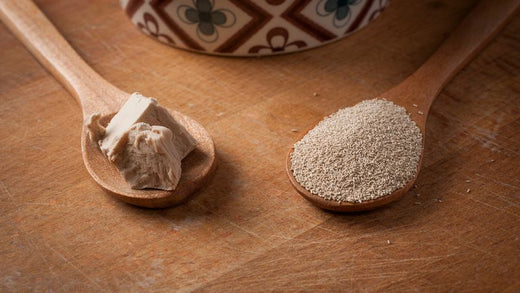
Creating the perfect pizza starts with a great crust, and the key to a great crust lies in choosing the right yeast.
In this comprehensive guide, we'll explore the different types of yeast available for pizza dough, their unique characteristics, and how they affect the flavor, texture, and rise of your crust.
What is Yeast?
Yeast is a versatile microorganism that plays a crucial role in food production. It is the primary leavening agent in pizza dough. As it breaks down sugars in the dough, yeast produces carbon dioxide gas, creating air pockets that cause the dough to rise.
The longer your dough sits, the more flavor it gets. This is called fermentation. Some pizza makers let their dough sit for days to get more taste.
Yeast is also key to making pizza dough yummy. It helps make the crust crispy and chewy.
Why are Yeasts Important in Making Pizza?

By breaking down sugars, yeast contributes to better browning of the crust. This results in a more appealing golden-brown color and enhances flavor through Maillard reactions.
When they ferment, they break down the complex carbohydrates in the flour, making the pizza more digestible and may reduce gluten sensitivity for some individuals.
Furthermore, the acids produced during yeast fermentation can help preserve the dough, extending its shelf life. This is particularly useful for pizzerias that prepare dough in advance.
Different Types of Yeast Used in Pizza Dough
Different yeast can make a big difference in your pizza dough. The type you use affects how your dough rises and tastes.
Normally, there are four types of yeast used in pizza dough. Let's look at these yeasts and find out how they affect pizza dough.
Active Dry Yeast
Active dry yeast is made by dehydrating live yeast cells, putting them in a state of hibernation.
When using active dry yeast in pizza dough, it's important to properly activate it in warm water before incorporating it into the dough and to allow sufficient time for rising. The longer fermentation time can contribute to a more complex flavor.
Instant Yeast
Instant yeast is a popular type of yeast used in pizza dough making. It can be added directly to dry ingredients without dissolving in water.
Instant yeast has a faster action, which requires adjustments to rising times and temperatures compared to recipes using other yeast types.
Fresh Yeast
Fresh yeast, also called cake yeast or compressed yeast, comes in a moist, crumbly form. Some believe it provides better flavor to the dough, so it is often preferred by professional bakers and pizza makers.
Fresh yeasts have a shorter shelf life compared to other yeast types, which should be carefully kept in airtight containers in the refrigerator.
Sourdough Starter
Sourdough starter is a fermented mixture of flour and water containing wild yeast and beneficial bacteria. It's used as a natural leavening agent. It can enhance the texture, making the crust softer and chewier.
When you are using a sourdough starter for pizza dough, it's important to ensure it's active and at its peak to provide proper leavening and flavor.

Here is a chart for you to easily compare these four yeasts:
|
Characteristic |
Active Dry Yeast |
Instant Yeast |
Fresh Yeast |
Sourdough Starter |
|
Form |
Larger granules |
Fine granules |
Moist, crumbly |
Liquid mixture |
|
Activation |
Needs proofing in warm water |
Can be added directly to dry ingredients |
Dissolve in water or crumble into ingredients |
Used as-is when active |
|
Rising Time |
Slower |
Faster |
Similar to active dry |
Slowest (long fermentation) |
|
Shelf Life |
Shorter |
Longer |
Shortest (2 weeks refrigerated) |
Indefinite with proper maintenance |
|
Storage |
Cool, dry place |
Room temp (unopened), fridge/freezer (opened) |
Refrigerated |
Room temperature |
|
Flavor Contribution |
Standard |
Standard |
Some say the better flavor |
Complex, tangy flavor |
|
Cold Proofing |
Tolerates well |
Tolerates well |
Tolerates well |
Excellent for cold fermentation |
|
Convenience |
Requires activation step |
Most convenient |
Less convenient due to perishability |
Requires ongoing maintenance |
For most home pizza makers, instant yeast is a good choice. It's easy to use and works fast. But if you want more flavor, try active dry or fresh yeast.
How Much Yeast Should I Use in Pizza Dough?
You'll want to use just the right amount of yeast in your pizza dough. Too much can make your crust taste nasty, and too little might not give you enough rise.
The amount of yeast to use in pizza dough depends on several factors, but here are some general guidelines.
For active dry or instant yeast, use 1 teaspoon (3-4 grams) per 3-4 cups (375-500g) of flour, which is about 0.8-1% of the flour's weight.
If you're using fresh yeast, you'll need about 2-3 times more than dry yeast. You can read the yeast conversion below to learn specifically.
Yeast Conversions
Fresh yeast to active dry yeast:
- 1 part fresh yeast = 0.5 parts active dry yeast
Fresh yeast to instant yeast:
- 1 part fresh yeast = 0.33 parts instant yeast
Active dry yeast to instant yeast:
- 1 part active dry yeast = 0.75 parts instant yeast
For example, if a recipe calls for 10g of fresh yeast, you would substitute approximately 5g of active dry yeast or 3.3g of instant yeast.
Please note that these conversions are approximate and may need slight adjustments based on specific recipes and conditions.
Additionally, when substituting yeast types, you may need to modify proofing times and methods to account for each variety's different characteristics.
How Fermentation Time Influences the Doughs' Quality?
Letting your dough ferment slowly can really boost its flavor. A longer fermentation time allows more complex flavors to develop.
You can try a cold fermentation by putting your dough in the fridge for 24-72 hours. This slow process creates a more tangy, bread-like taste.
For a quicker option, let your dough rise at room temperature for 1-2 hours.
How Temperature Affects Dough Properties?
Temperature plays a big role in how your dough turns out. Warmer temps speed up yeast activity, while cooler temps slow it down.
For a quick rise, keep your dough in a warm spot (around 80°F). This works well if you're short on time.
If you want more flavor, use cooler temps (around 65°F). This slows down the yeast, allowing more time for flavors to develop.
You can also try a mix of temperatures. Start with a warm rise, then move to the fridge. This gives you both good texture and flavor.
How to Care Yeast for Long Storage?
To keep your yeast fresh, store it in a cool, dry place. Unopened packets of dry yeast can stay in your pantry for up to 2 years. Once opened, put them in an airtight container in the fridge.
For an even longer shelf life, freeze your yeast. It can last up to 6 months in the freezer. Just make sure to use an airtight container to prevent moisture.
Fresh yeast needs special care. Keep it in the fridge and use it within two weeks. You can also freeze fresh yeast for up to 3 months.
How to Identify and Avoid Expired Yeast?
Expired yeast won't make your pizza dough rise. To check if your yeast is still good, try this simple test:
- Mix 1 teaspoon of sugar into 1/2 cup of warm water.
- Add 2 1/4 teaspoons of yeast (one packet).
- Wait 10 minutes.
If the mixture bubbles and smells yeasty, your yeast is still active. If not, it's time to buy new yeast.
Old yeast might look clumpy or have a darker color. If you see mold, throw it out right away.
Frequently Asked Questions
How does the type of yeast affect the texture and flavor of pizza dough?
Different yeasts create varied textures and tastes. Active dry yeast makes a chewier crust with more depth of flavor.
Instant yeast results in a lighter, airier texture. The flavor is milder compared to active dry yeast.
Can fresh yeast be used in place of dry yeast for pizza dough recipes?
Yes, you can use fresh yeast instead of dry.
What is the recommended yeast for a traditional Neapolitan pizza dough?
Neapolitan pizza often uses fresh yeast. The amount ranges from 0.1% to 0.3% of the flour weight.
How does pizza yeast vary from other baking yeasts in terms of rising time and dough elasticity?
Pizza yeast is designed for a quicker rise. It often contains dough relaxers for easier stretching.
Regular bread yeast needs more time to rise. It creates a stronger gluten network, which can be harder to shape.


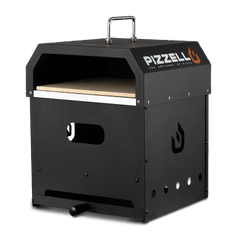
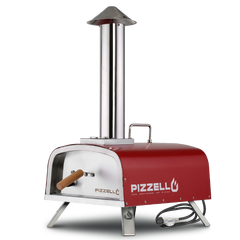
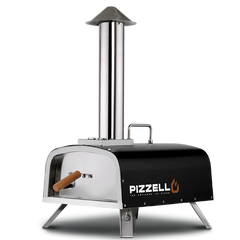
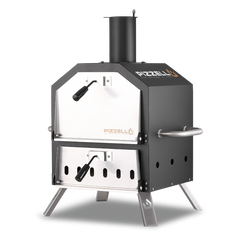




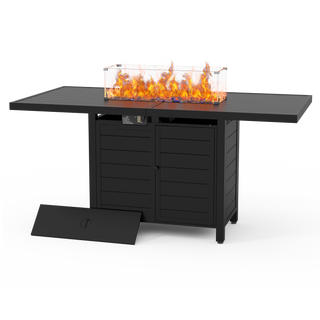
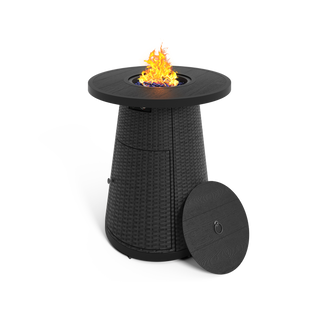

 Aluminum Dining Table
Aluminum Dining Table
 WPC Dining Table
WPC Dining Table
 HDPE Dining Table
HDPE Dining Table
 Cart
Cart
 Gas Burner
Gas Burner
 Hat
Hat
 Apron
Apron
 Swivel Rocker Set
Swivel Rocker Set
 Textilene Chairs
Textilene Chairs
 HDPE Chairs
HDPE Chairs
 Wicker Counter Height Barstools
Wicker Counter Height Barstools
 Metal Counter Height Barstools
Metal Counter Height Barstools


























